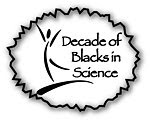Think about your last visit to your neighborhood park. Did you notice the green grass and tall trees? Well, depending on where you live, your park may include many trees scattered across the landscape. Here in the Midwest, tree lined entrances are common and several trees all along the landscape. Unlike the woods or forest, trees in an urban park are often more spread apart from each other with a nicely cared-for lawn. In woods, the trees and saplings are often close together and in the summer time the leaves shade the ground. Typically, grass does not grow in the woods. But urban parks are still very nice places - for people and wildlife.
Though most people don't think about it, cities (like those in the Midwest) were built in the middle of the forest. Buildings were put up and many trees were removed. But from the sky, many cities are really fragmented forests - a patch of trees here, a patch there, and most connected by a few lines of tree-lined streets. Your neighborhood IS a forest -- an Urban Forest.
And like any ecosystem, the habitat will attract certain types of wildlife. Depending on your geographic location, you like have wild neighbors that include raccoons, opossums, squirrels, birds such as robins, mocking birds, crows, starlings, pigeons, cardinals, finches, sparrows, woodpeckers, and doves, insects such as bees, butterflies, beetles, grasshoppers, and dragonflies, plus lizards, toads, and frogs. This is a forest ecosystem, but modified because of human occupation. But think about it, we can and do live with the wild creatures and some species are actually very good at living near human populations.
There are things you an do to learn more about the "Forest Where You Live" and help the forest, the wildlife, and the people enjoy it better.
So go on outside and take inventory of your local forest.
Sunday, December 30, 2007
Urban Forestry
Subscribe to:
Post Comments (Atom)






















No comments:
Post a Comment